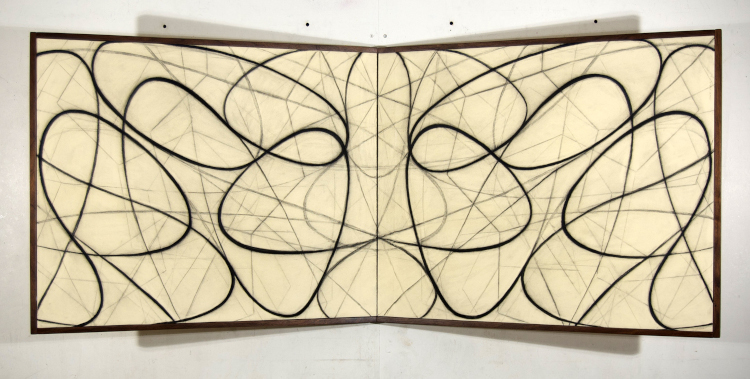Mark Pomilio
Originally from Philadelphia, Pomilio is a professor of painting and drawing within the School of Art at Arizona State University’s Herberger Institute for Design and the Arts.
Professor Pomilio’s current research has focused on creating images, which embody principles of geometry, fractals, cloning and single cell manipulation. These interests have led to invitations to lecture nationally on topics as diverse as art and mathematics and the role the visual arts can play in understanding the social ramifications of advances in the Life Sciences. His artwork has been featured in solo exhibitions at museums and galleries nationally and internationally, including Luxehill Museum in Chengdu, China, Xu Beihong Art Academy, Renmin University of China, in Beijing, the Chapelle Saint-Louis de la Salapetriere, in Paris, France, and Art Resources Transfer, in New York City.
Education
MFA, Painting, School of Art and Design University of Michigan, Ann Arbor, 1995
BFA, University of Pennsylvania, PA, 1993
Four-Year Studio Degree, Pennsylvania Academy of the Fine Arts, Philadelphia, PA, 1991
Area of study



Artist Statement
Variation 1: Ideas enter your thoughts. Some leave almost as quickly as they enter and others remain for a lifetime. The ones that have stayed and have taken up residency in my mind, since I was a child, circle around the complexity, wonder and beauty of our natural world. I have devoted my artistic energies towards an attempt to express these interests through visual means. The conundrum ensued, once I began to realize that my interests became fixated on nature’s ever-present changing, dynamic. This dynamic could be classified as a fourth-dimensional notion, not a static two-dimensional interaction, as found in drawing and painting. Expressing the fact that nature, both on a molecular and grand scale, is in a perpetual state of change became the basis for all my work. This is what is at the core, or is the essence of my pursuit.
This pursuit has taken on different topics, which have steered the work conceptually into issues surrounding the life sciences, cloning and genetics. The works evolving around these topics have looked more on a molecular level, at cell division, multiplication and mimic growth. I have used simple geometry, as a tool to emulate a cell or series of cells dividing, growing and forming into a complex organism. The works take on similar properties as I manipulate a group of geometric forms, which all share traits, and draw them out, erase, and/or paint over them, repeatedly. This act may go on for days, weeks, months or years, or might culminate in hours. There is no set way of knowing where this method will lead until there is a visual unity or conclusion within each work. In that sense, it is completely open-ended, mysterious and… totally natural.
Variation 2: My artistic interests are fueled by a desire to create artwork, which mirrors naturally occurring systems in our world. In “mirror” I am referring more to ideas regarding physical processes rather than mimetic duplication. I find inspiration on a myopic level by attempting to imitate cell repetition and cloning. I have chosen to create imagery, which expresses a developmental process rather than an overt visual depiction. The origin of this research has been formulated through a series of simple geometrical equations. These equations have yielded a group of “parent” rudimentary geometrical forms. One or several of these forms are multiplied and folded equally throughout the pictorial field. Through this process, a formal pictorial structure is born. Therefore, each image has evolved through the development of pictorial representations of geometric systems of growth. This “parent” form is representative and meant to emulate a single or multiple cells dividing and compounding into a complex organism. In many works, formal decisions are multiplied equally throughout the field, causing a type of visual unity. This balance and symmetry has a visual equivalency in how we read the meditative qualities of a reflective pool, or a religious icon. In the end, my goal is to force a harmony upon the image field that, in turn, forces a potential meaning through the integration of the image and title.